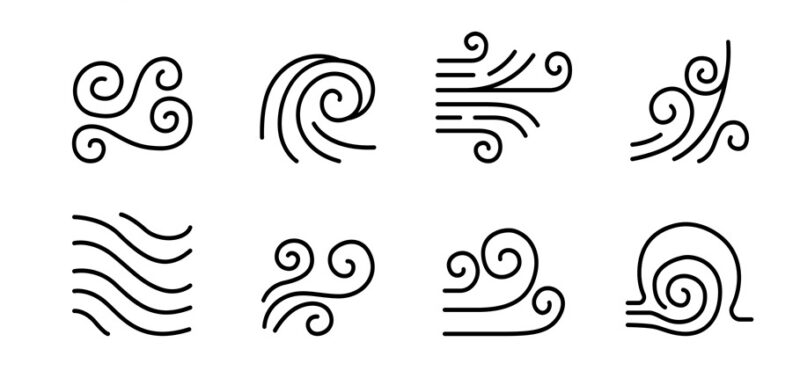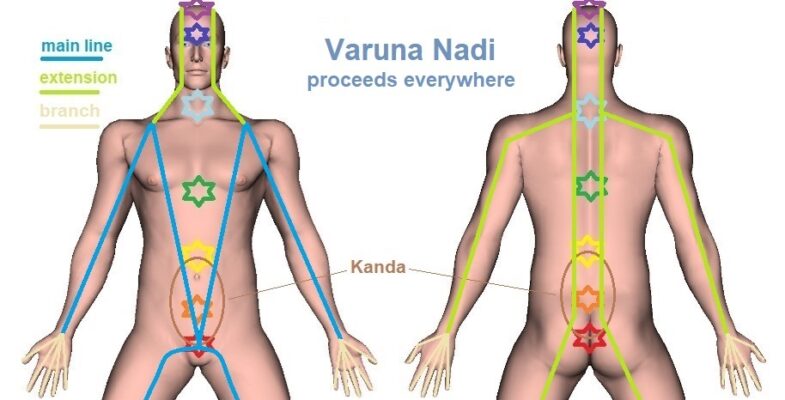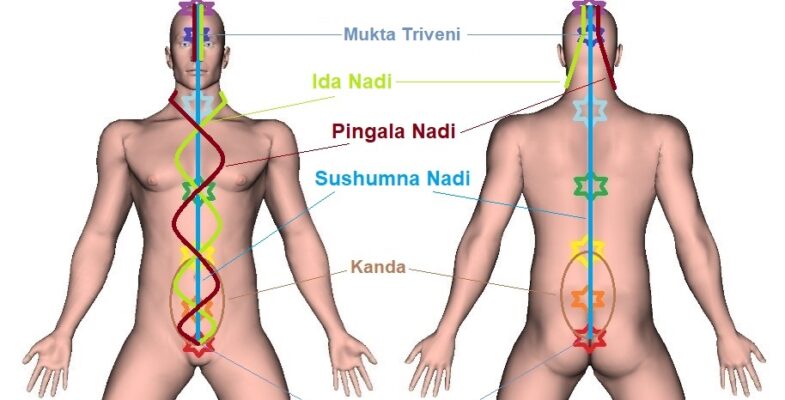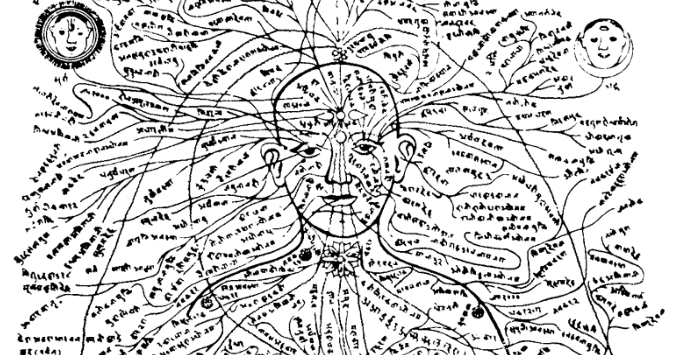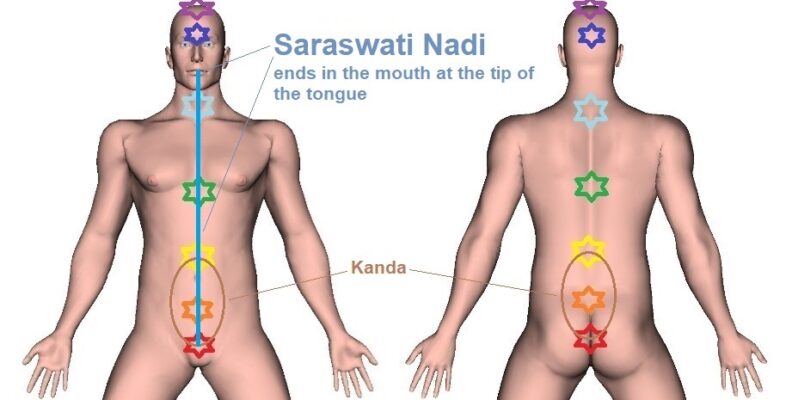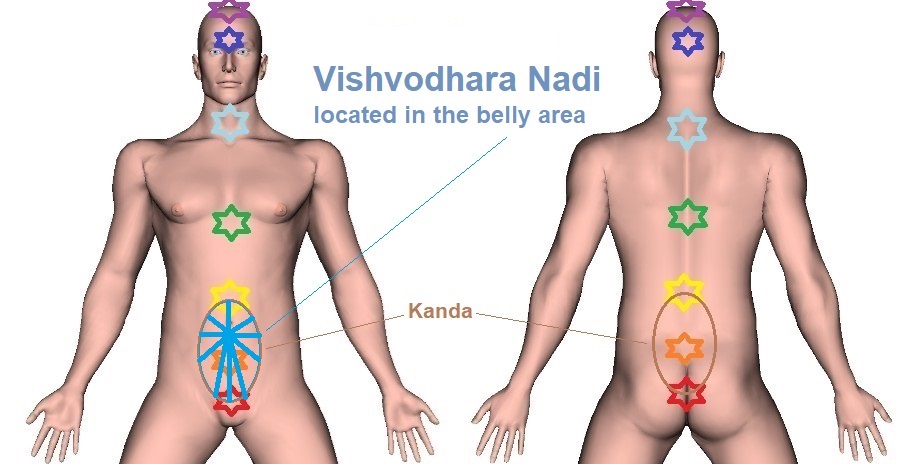
Vishvodhara Nadi is one of the fourteen main Nadis, and also written as Visvodari, Vishva-Udara, Visvodara, Vishwadora, or Vishwodari Nadi.
The Sanskrit word Vishva means “world” or “cosmos,” while Udara literally means “cavity,” “hollow,” “inside,” or “the interior.” In Yoga and Ayurveda the word Udara — depending on the context in which it’s used — typically refers to the belly, navel area, abdomen, womb, or stomach.
In general, it’s widely assumed that Vishvodhara Nadi is notably associated to the abdominal area, while it’s also thought to have its starting point and termination in the Kanda (navel area).
Pathway of Vishvodhara Nadi
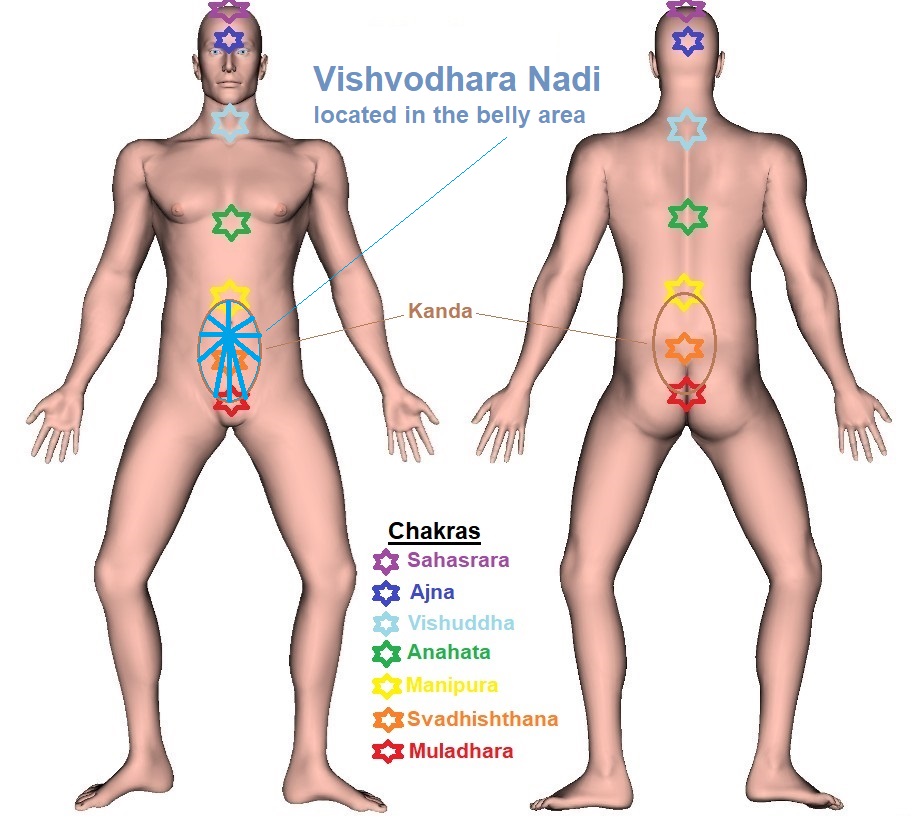
Above you find a tentative chart with the pathway and location of Vishvodhara Nadi.

Mind that some practitioners in the Thai Massage community equate this Nadi rather with the Thai Sen Line Kalathari.
Nevertheless, the descriptions in the authoritative Yoga texts give no indications of a pathway that extends to the legs and toes and arms and fingers (such as is the case with Sen Kalathari); in fact, that would be rather Varuna Nadi of which the ancient sources state: “… which proceeds everywhere” and “… stretches below and above and reaches the entire body.”
In any case, hereunder you find the descriptions we’ve spotted for Vishvodhara Nadi in classical Yoga scriptures:
- Visvodara is located in the knot of the navel (Darshana Upanishad);
- Vishvodhara is between Kuhu and Hastijihva in the middle of the belly (Yoga Yajnavalkya);
- The Nadi which pervades the entire left region is known as Visvodara (Vasistha Samhita );
- Visvodara is in the middle of Kuhu and Hastijihva (Vasistha Samhita );
- Visvodari assimilates the four kinds of food (Hatha Tattva Kaumudi);
- Hail to the right of the cheek, Vishvodara, the Sakti attracting all (Bhavana Upanishad);
- Visvodari Nadi digests foods of four kinds (Yoga Shikha Upanishad).
Functions of Vishvodhara Nadi
Vishvodhara Nadi is said to provide energy to the digestive system, that is, supports the absorption of food.
Additionally, it’s believed that it improves the distribution and flow of Prana throughout the body, notably of Prana that rises through the Sushumna Nadi.







